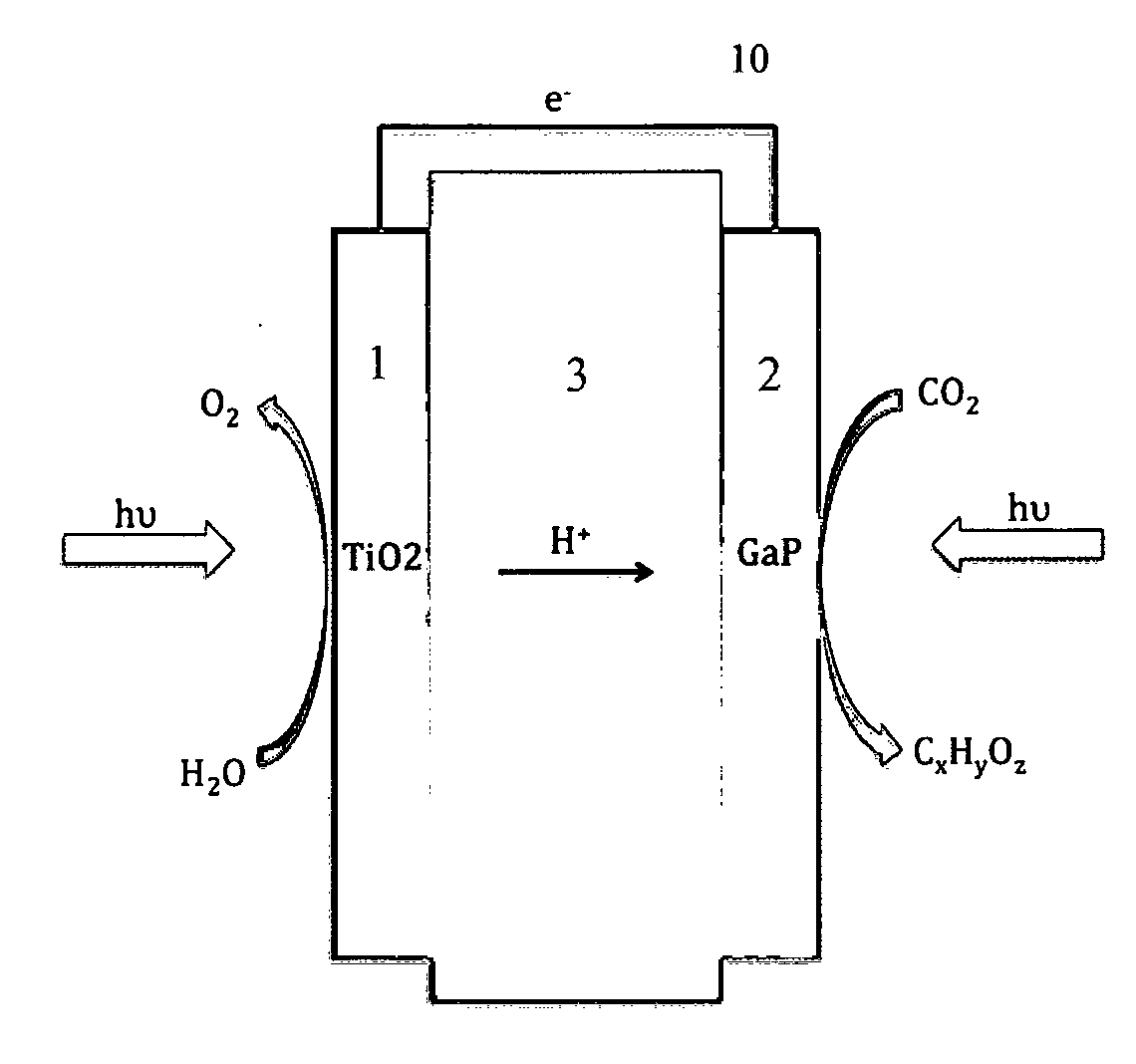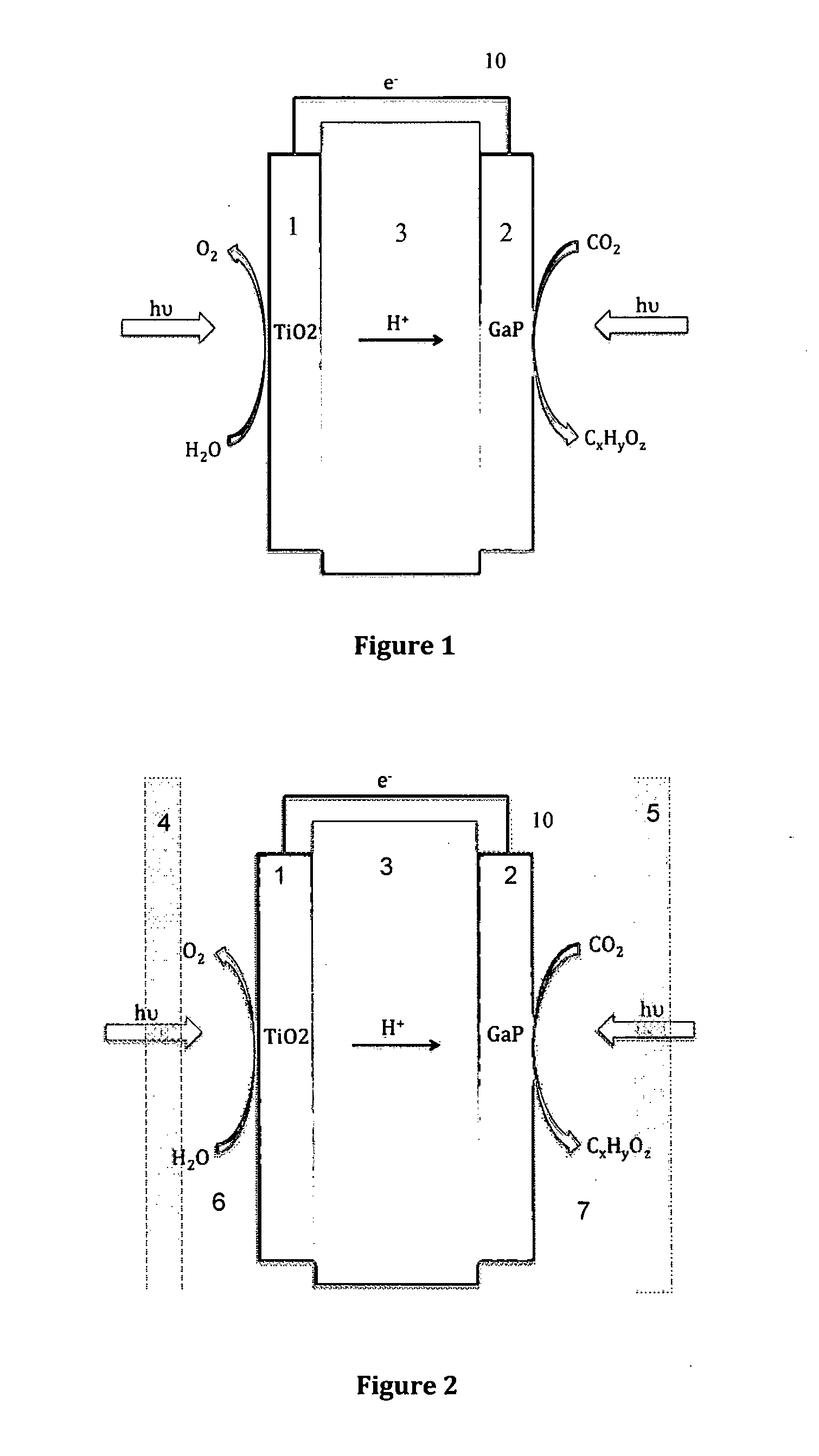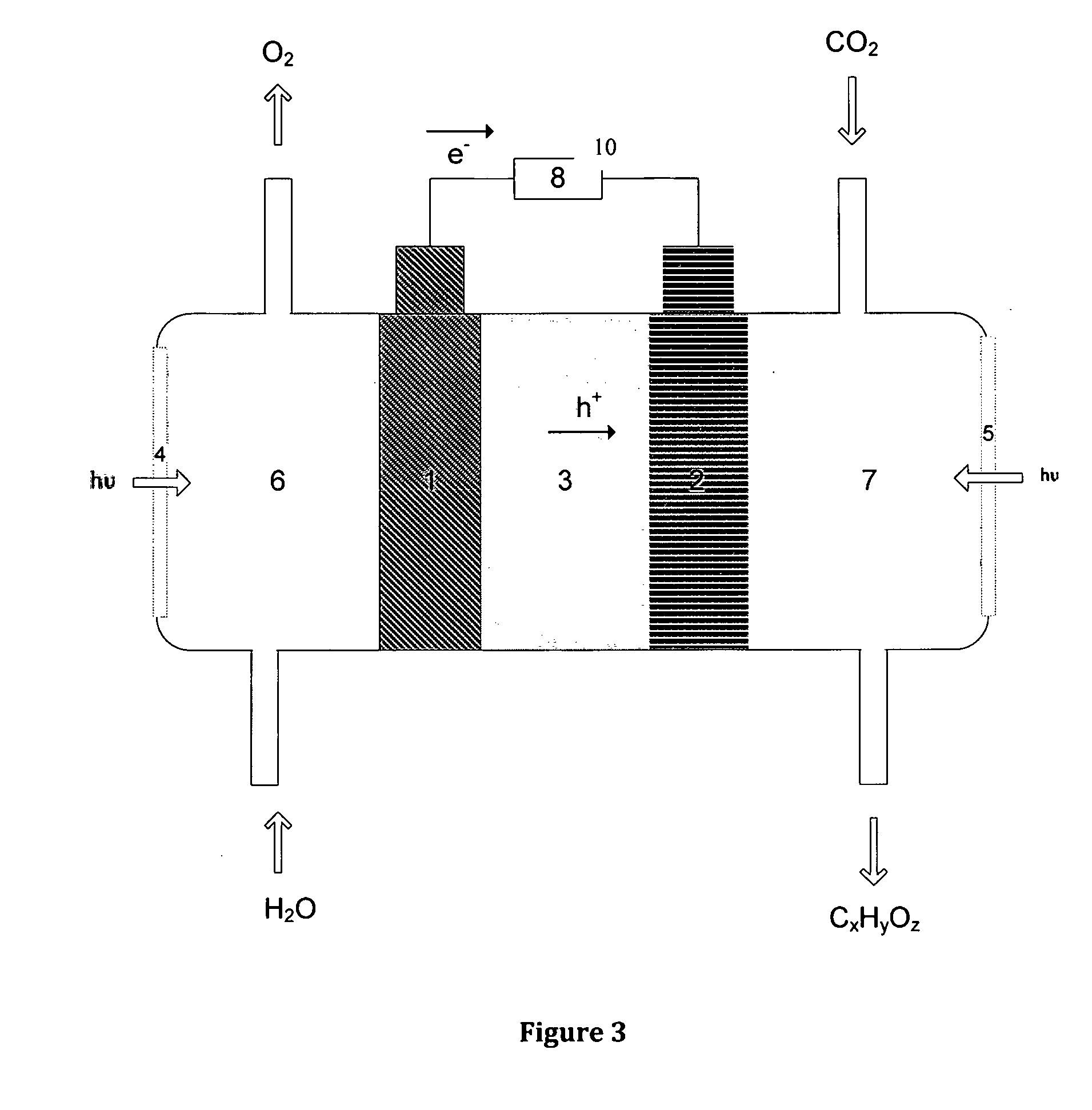Photo-electrochemical cell
- Summary
- Abstract
- Description
- Claims
- Application Information
AI Technical Summary
Benefits of technology
Problems solved by technology
Method used
Image
Examples
example 1
[0050]The photo-electrochemical cell, system or method for conversion of light and air into chemicals and, more particularly to a system which comprises the fowling steps and elements:
1.a. The Electrodes at Both Anode and Cathode
[0051]The electrode consists out of carbon cloth or Toray paper in some cases coated with graphene sheets. The graphene sheets deposited on carbon cloth / Toray paper by means of RF-CVD or MW-CVD can be made e.g. according to a method of Wang, J. J. et al. (2004) Carbon, 42(14): 2867-2872 or Zhao, X et al. Journal of Power Sources, Volume 194, Issue 2, December 2009, Pages 1208-1212.
[0052]The cell comprises the use of glass windows with a transparent serpentine flow profile, similar to those encountered in H2 / O2 fuel cells, custom made by for example Safir Puurs.
1.b. Photo-Oxidation
[0053]The photo-catalytic oxidation reaction will occur initially on a catalytic substrate based on titanium dioxide in the form of nanoparticles (such as TiO2, P25 grade, Degussa)....
PUM
| Property | Measurement | Unit |
|---|---|---|
| Thickness | aaaaa | aaaaa |
| Photocatalytic properties | aaaaa | aaaaa |
| Electric charge | aaaaa | aaaaa |
Abstract
Description
Claims
Application Information
 Login to View More
Login to View More - R&D
- Intellectual Property
- Life Sciences
- Materials
- Tech Scout
- Unparalleled Data Quality
- Higher Quality Content
- 60% Fewer Hallucinations
Browse by: Latest US Patents, China's latest patents, Technical Efficacy Thesaurus, Application Domain, Technology Topic, Popular Technical Reports.
© 2025 PatSnap. All rights reserved.Legal|Privacy policy|Modern Slavery Act Transparency Statement|Sitemap|About US| Contact US: help@patsnap.com



